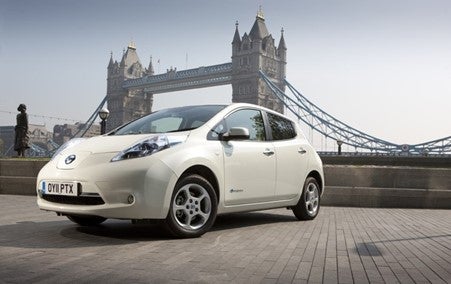QUBE is just-auto’s new online intelligence platform, providing real-time information, insight and analysis on the global automotive manufacturing industry. This month we provide extracts from component sectors covered in the new service, continuing with a look at the latest developments in advanced automotive batteries, including a Q&A with Western Lithium.
Not so long ago, the automotive industry was protecting an old technology yet nowadays it appears to have embraced the need for hybrids and the use of advanced battery technology. Macro economic, political and environmental events such oil dependency, new competition and increasing carbon emissions have all contributed towards the new move to electrification of transportation.
Yet some industry observers argue that the emerging electric vehicle (EV) and plug-in hybrid electric vehicle (PHEV) markets could flatten out due to unproven technology. They reckon that these markets will be initially bolstered by heavy subsidies to automakers, battery makers and consumers but that sustained growth will depend on yet-to-be-proven battery technology as well as on supporting government policies.
Meanwhile, the stubbornly high cost of battery packs remains a hurdle for battery producers. For its part, A123 Systems anticipates significant cost reductions in its products over the next several years and these will come from a combination of manufacturing efficiencies and technology advances.
Jeff Kessen, director of automotive marketing, Automotive Solutions Group, A123 Systems, told us: “We believe that it will not be possible to remain competitive in our market by only relying on manufacturing scale to drive cost reduction. Our R&D portfolio benefits from numerous research partnerships and we anticipate that technology advances will contribute to steady cost improvements over time.
“A variety of industry sources are projecting that industry-wide, battery cost could be cut in half over the next five years. By about 2015, industry analysts estimate that costs should be below $500/kWh, with some saying that costs will drop below $400/kWh. Unfortunately many cost analyses don’t state the underlying assumptions and therefore may not be comparable but we find these projections to be in a reasonable range based on what we know today.”
How well do you really know your competitors?
Access the most comprehensive Company Profiles on the market, powered by GlobalData. Save hours of research. Gain competitive edge.

Thank you!
Your download email will arrive shortly
Not ready to buy yet? Download a free sample
We are confident about the unique quality of our Company Profiles. However, we want you to make the most beneficial decision for your business, so we offer a free sample that you can download by submitting the below form
By GlobalDataWhichever way you look at it, electric vehicles remain expensive and give motorists range anxiety with just 100 miles between charges.
“While we don’t want to minimise the issue of range anxiety” added Kessen, “it is important to note that according to the US Department of Transportation, roughly 80% of US drivers log 50 miles or less per day. There are of course periodic long range trips which an EV won’t support but it’s not reasonable to expect that an EV can replace every vehicle in the market. Rather, we expect that different segments of the automotive market will gravitate to different vehicle types over time. For example, households which have two vehicles may be well suited to enjoy the benefits of an EV in the vehicle predominantly used for work commuting.
“It’s also important to have reasonable expectations for build out of a charging infrastructure. After a home charging location, the next most logical will likely become workplace charging and A123 is actively planning this for its own facilities. We look forward to other employers showing similar leadership as electrified vehicles become more accessible to the consumer.”
Dr Joachim Fetzer, executive vice president, SB LiMotive concluded: “Electric vehicles need batteries that have a high energy density, since a great amount of energy needs to be stored in the battery for the vehicle to travel long distances. Range, which depends in large part on the energy density of the battery cell, is a factor that is crucial to the success of electric vehicles. Currently, a state-of-the art lithium-ion battery for a vehicle with a range of 60 to 90 miles would be the size of the trunk of a VW Golf. In other words, a battery with 35 kilowatt-hours of capacity would have a volume of roughly 350 litre and a mass of some 350 kilograms. Customers are demanding a range of 125 miles. To meet their demands, engineers are looking to increase energy density. In raising energy and power density, the focus is on improving the chemicals used in the cells. Improvements in energy density will also make it possible to reduce the weight and size of lithium-ion batteries. Both aspects, reducing battery weight and improving energy density, will help to extend the range of EVs.”
Q&A with Western Lithium
In this interview in late 2010, Matthew Beecham talked with Jay Chmelauskas, Western Lithium’s president about the company’s advanced automotive battery developments.
just-auto: Last year’s [2009] stimulus package committed the US government to spending billions for batteries for electric cars. Do you think that the new manufacturing capacity could exceed the demand for electric vehicles and plug-in hybrids?
Jay Chmelauskas: Based on the predictions of a 10% electric and 20% hybrid adoption rate globally by 2020, it would require that substantial capacity would need to be added to what is currently planned. This becomes a timing question for the market for hybrids and EV’s, and strategic with respect to first movers advantage. Excess capacity initially will mean that the groups that have committed capital will win market share, and lead in technology innovations and economies of scale. The move to electrification is strategic and long term. The early movers can capture certain segments of a future potentially very large value chain market.
Some people believe that the emerging EV and PHEV markets could flatten out due to unproven technology. They reckon that the market will be initially bolstered by heavy subsidies to automakers, battery makers and consumers but that sustained growth will depend on yet-to-be-proven battery technology as well as on supporting government policies. Would you agree?
Once you move beyond the early adopters, we expect that the first big market for these vehicles will be fleets due to their greater understanding of the total cost of ownership model. This will ultimately be the proving ground for the vehicles on a large scale. If the technology proves itself and range increases due to early innovations, and we expect that it will, the future could see an increase steeper than all predictions.
There are many other driving forces such as increasing energy prices, need for energy independence, competition for dominance in a paradigm shift in the automobile industry, and air pollution in major new wealth centres like Beijing to support the electrification of the automobile.
Presumably, the cost of batteries needs to be reduced to below $400 a kilowatt hour to make it commercially attractive?
Battery costs are coming down rapidly and manufacturers are directing considerable attention to cost reductions. Two years ago the industry was talking about whether battery packs would be under $1000 per kWh by 2015 while this year we already see Nissan announce Leaf battery costs of around $750 per kWh. Most major manufacturers now have $500 per kWh as a realistic mid term target and we could potentially see dramatic reductions, particularly once manufacturing economies of scale kick in. Think about the reductions we saw in flat screen TV’s.
If the cost of battery packs can be significantly reduced, where will the cost reduction come from? i.e. efficient factory management, cutting waste and other management-related expenses or from fundamental improvements in battery technology?
We believe that all of the above are likely to contribute to incremental improvements. In additional we believe there is potential for R&D into third or fourth generation chemistries advancing battery technology significantly over the next ten years, particularly as significant industry players turn their attention to this due to strong competition.
Whichever way you look at it, EVs remain expensive and give motorists range anxiety with just 100 miles between charges. What needs to happen to EV batteries to improve this situation?
We see most taxi drivers in Vancouver now driving hybrids. They are not ‘expensive’, but rather are very cost effective. The industry is introducing a perfect transition technology, which is the plug-in hybrid. Once consumers realise that they are not using their gas engine due to their typical short commute, and the cost of their commute is a fraction of their gasoline equivalent cost, range anxiety will vanish. Not to mention better improvements in range and charge time capabilities over this same period. Again leading to potential explosive growth for EV’s in certain geographical regions.
As we see it, while extended-range EVs (EREVs) eliminate range anxiety, the costs of their range extenders will have to fall as fast as those of battery packs to keep then an attractive option. We suspect that over time, EREVs will migrate to higher segments, offering sporty and luxury models a way to provide zero emissions in city centres while maintaining peak performance at high speeds. Meanwhile, the low end is likely to migrate over time toward pure battery electric vehicles. How do you see the evolution of EREVs?
Extended range is ‘half way technology’. We believe the hybrid will disappear in time. For certain applications or attitudes, cars may remain 100% internal combustion engines. But, the future for mass automotive transportation is electric vehicles. In addition, ‘peak performance’ will come from electric cars, not combustion engines. The debate is how near this future of electric transportation really is. We believe that wide spread adoption of electrification can be near with advances in technology brought on by competitive forces.
NiMH batteries are said to be not an ideal energy-storage device for hybrid cars. Their limitations include moderate energy conversion efficiency, which translates to some energy loss and significant heat production in normal usage, reduced life with high depth-of-discharge cycling, and unsatisfactory performance at high and low temperatures. Given these limitations, how do you see its application for future hybrid and electric cars?
The industry is near $500 kWh for Lithium Ion batteries which is near the cost competitive cross over with NiMH. Lithium batteries have nearly 3 times the energy density and provide better performance than NiMH. NiMH was replaced in computers and cell phones several years ago. We believe the NiMH debate for electric cars is over.
Find out more about QUBE and take a free trial
QUBE automotive battery technology intelligence service (annual site-wide subscription)







